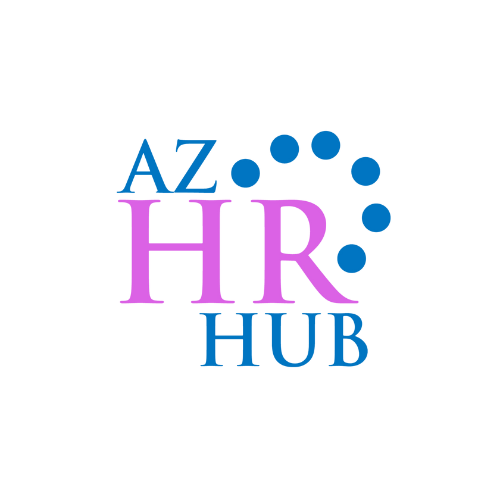Strategic Workforce Planning: Preparing for 2024
In the ever-evolving landscape of human resources, the importance of workforce planning cannot be overstated. Workforce planning is a strategic approach to managing human capital, ensuring that an organization has the right people with the right skills in the right positions at the right time. Its significance lies in its ability to align HR initiatives with broader organizational goals, contributing to the overall success and resilience of businesses.
Business Goals Alignment
Seamless Alignment: Strategic workforce planning should be seamlessly aligned with the broader goals and strategies of the organization. This involves a thorough understanding of the company's mission, vision, and objectives. HR professionals must actively engage with business leaders to identify key priorities and ensure that workforce planning initiatives directly contribute to achieving these goals.
Talent Forecasting
Data-Driven Predictions: Talent forecasting involves leveraging data and analytics to predict future talent needs accurately. By analyzing historical trends, market conditions, and internal performance metrics, HR teams can identify critical skills and competencies required for current and future success. This proactive approach enables organizations to stay ahead of talent shortages and gaps.
Succession Planning
Continuity and Development: Succession planning is the cornerstone of strategic workforce initiatives, ensuring the continuity of key roles. Organizations need to identify high-potential employees and provide them with targeted development opportunities. By nurturing internal talent, businesses can minimize disruptions during leadership transitions and maintain a pipeline of skilled professionals.
Industry-Specific Considerations
Tailoring Strategies: Workforce planning strategies should be tailored to address industry-specific challenges and dynamics. Each sector may have unique workforce demands, regulatory considerations, and market trends. Staying informed about industry-specific developments enables HR professionals to develop strategies that are not only effective but also responsive to the particular needs of the business sector.
Adaptability and Flexibility
Resilience Planning: Building adaptability and flexibility into workforce plans is crucial for navigating changing market conditions. Organizations should anticipate potential disruptions, such as technological advancements, economic shifts, or unforeseen events. By incorporating flexibility, businesses can adjust their workforce strategies promptly to align with evolving circumstances.
Data-Driven Decision-Making
Informed Decision-Making: Workforce planning should prioritize data-driven decision-making. Establishing key performance indicators (KPIs) allows HR professionals to measure the success of workforce planning initiatives objectively. Regularly analyzing relevant data ensures that adjustments can be made based on real-time insights, improving the overall effectiveness of HR strategies.
Employee Development and Training
Continuous Learning: Investing in ongoing employee development is essential for workforce planning success. Organizations should offer training opportunities that align with organizational goals and address emerging skill requirements. This approach not only enhances the capabilities of the workforce but also fosters a culture of continuous learning and adaptation.
Diversity and Inclusion
Building Resilient Teams: Considering diversity and inclusion in workforce planning contributes to building more resilient and innovative teams. Organizations should ensure that planning efforts account for a diverse range of skills, experiences, and perspectives. A diverse workforce brings varied strengths, enhancing problem-solving capabilities and fostering creativity.
Employee Engagement and Well-Being
Positive Workplace Culture: Prioritizing employee engagement and well-being is foundational for a healthy workforce. Organizations should implement strategies to create a positive workplace culture that supports employee satisfaction. Engaged employees are more likely to contribute positively to the organization and remain committed during periods of change.
Communication and Change Management
Transparent Communication: Clear and transparent communication about workforce planning initiatives is crucial. Employees at all levels should be informed about the objectives, processes, and expected outcomes of these initiatives. Effective change management strategies should be in place to navigate organizational transitions smoothly, minimizing resistance and ensuring successful implementation.
Technology Integration
Efficient Processes: Leveraging technology solutions streamlines workforce planning processes. HR software and analytics tools enhance the efficiency of data management, allowing for more accurate predictions and informed decision-making. Integrating technology into workforce planning ensures that HR teams have the necessary tools to manage the complexities of modern talent management.
Continuous Monitoring and Adjustment
Agile Planning: Regularly monitoring the effectiveness of workforce planning strategies is essential. Organizations should be prepared to adjust plans based on evolving business needs, market trends, and internal dynamics. An agile approach to planning allows HR teams to continuously refine strategies, ensuring that workforce initiatives remain relevant and impactful over time.
Strategic workforce planning can have a transformative impact on businesses of all sizes:
Enhanced Efficiency: By ensuring the right people are in the right roles, workforce planning enhances overall organizational efficiency, leading to increased productivity and performance.
Cost Savings: Optimized resource allocation and reduced turnover contribute to cost savings. Proactive planning minimizes hiring costs and ensures investments in employee development are targeted and effective.
Talent Retention: Through succession planning and employee development initiatives, businesses can foster loyalty and retain top talent, reducing turnover costs and maintaining a skilled and experienced workforce.
Adaptability and Innovation: Workforce planning fosters an environment of adaptability and innovation. By aligning talent with strategic goals, businesses can respond more effectively to market changes and stay ahead of industry trends.
Strategic Growth: Ultimately, strategic workforce planning positions businesses for strategic growth. It provides a roadmap for attracting, developing, and retaining the talent needed to achieve organizational goals, ensuring sustained success in a dynamic business environment.
Strategic workforce planning isn't just a buzzword; it's the compass guiding businesses toward a future of sustainable success. Let's make strategic workforce planning a cornerstone of HR excellence, fostering organizational resilience, agility, and unparalleled success in the years to come.

